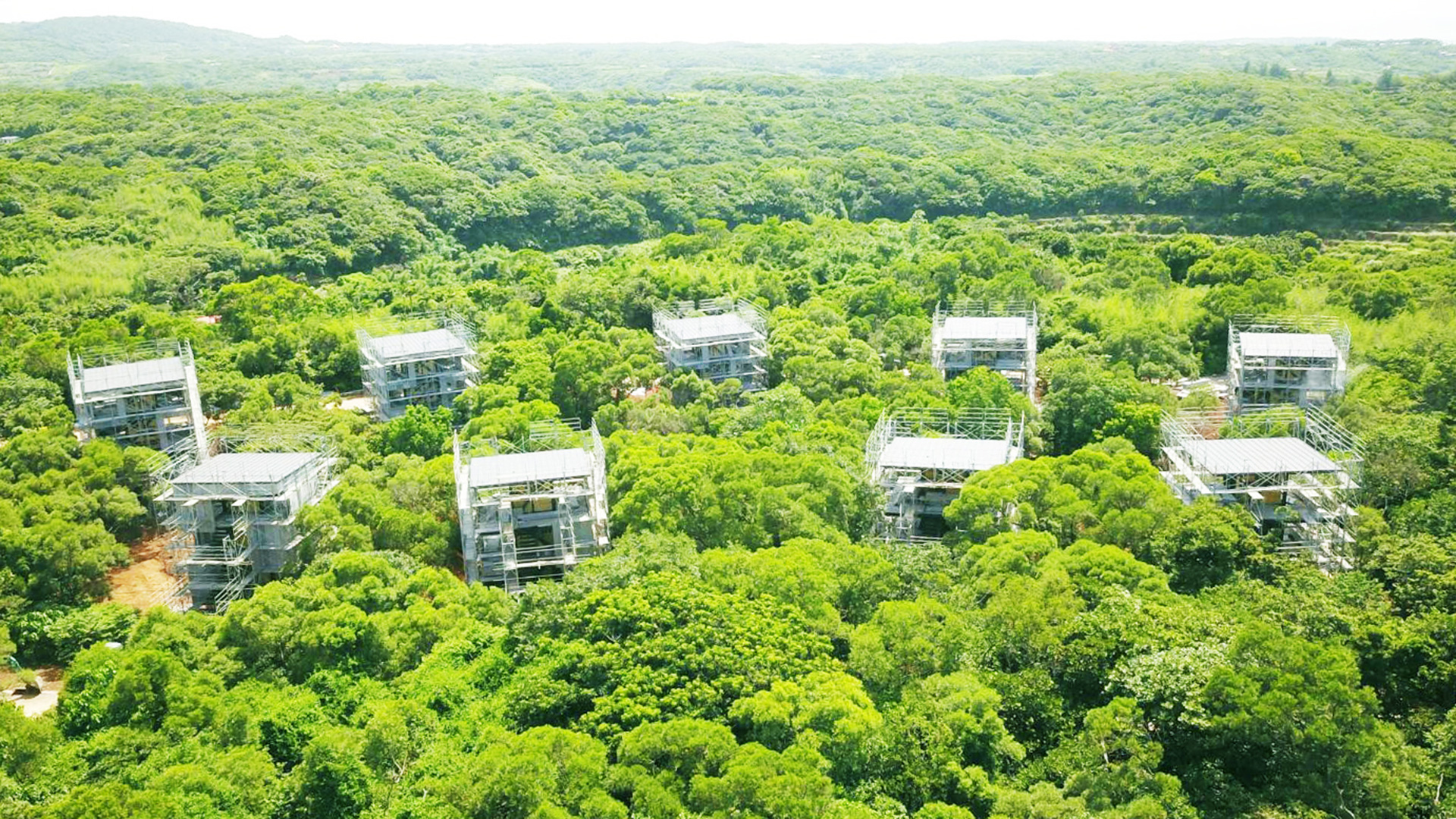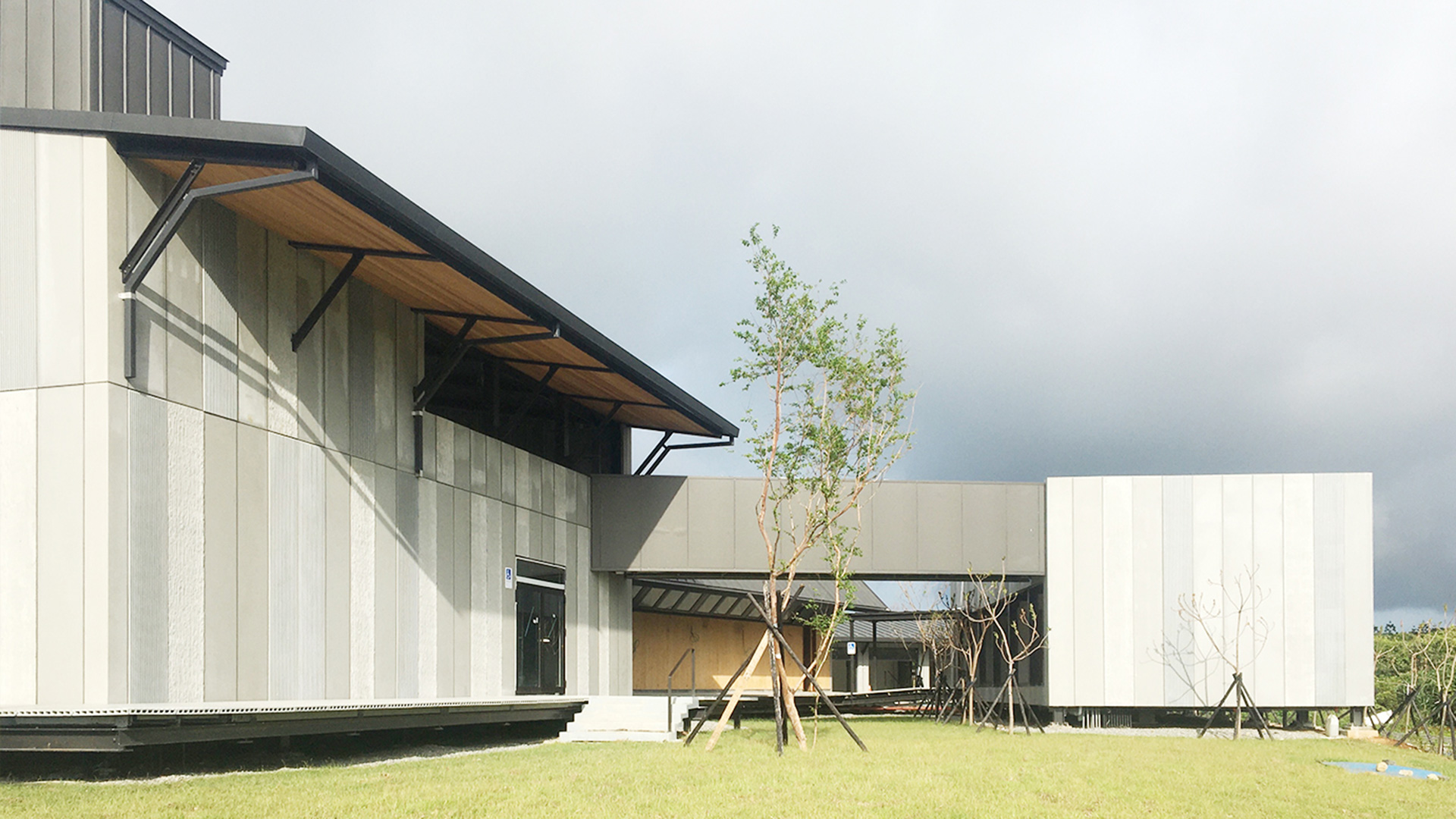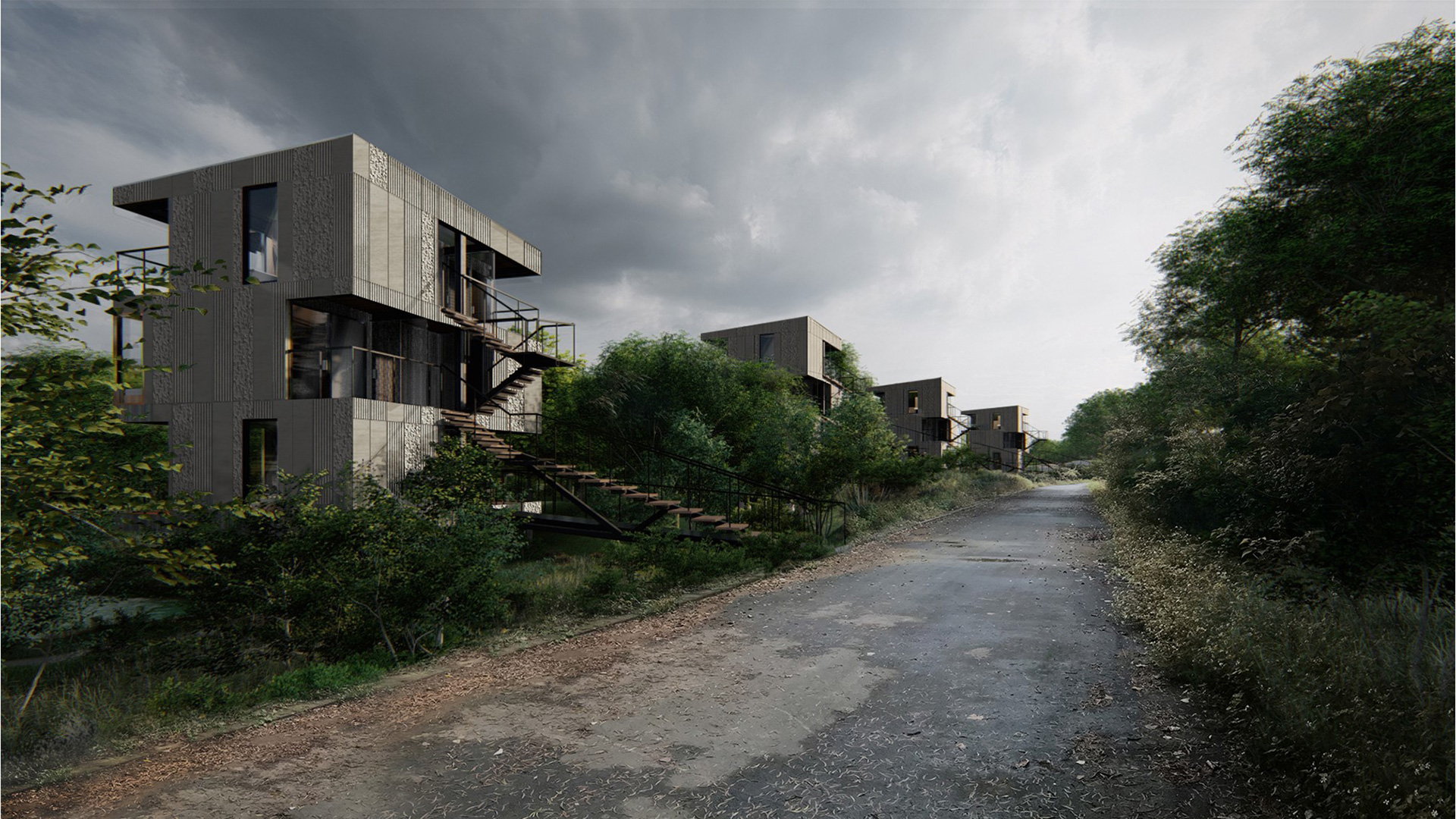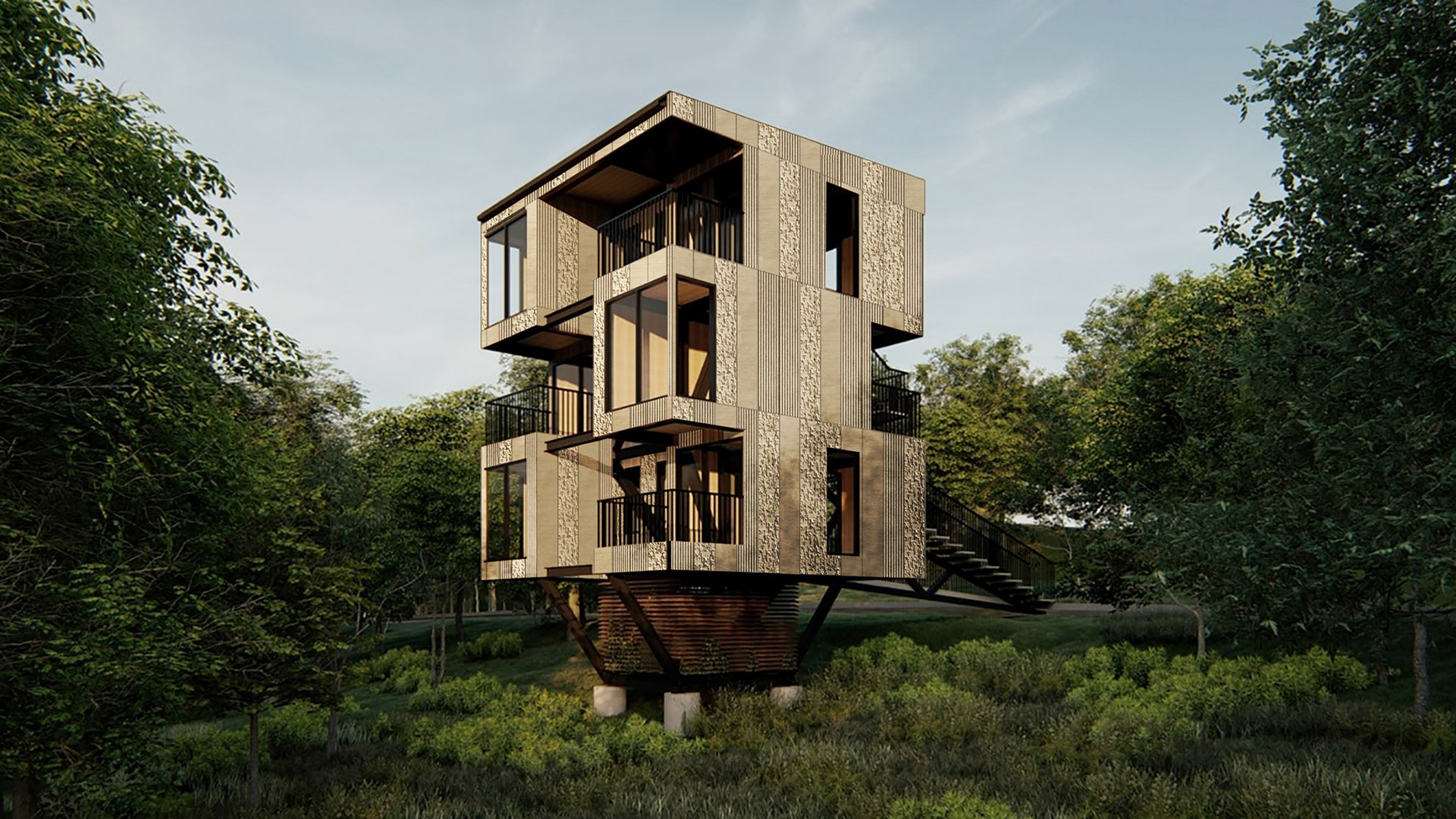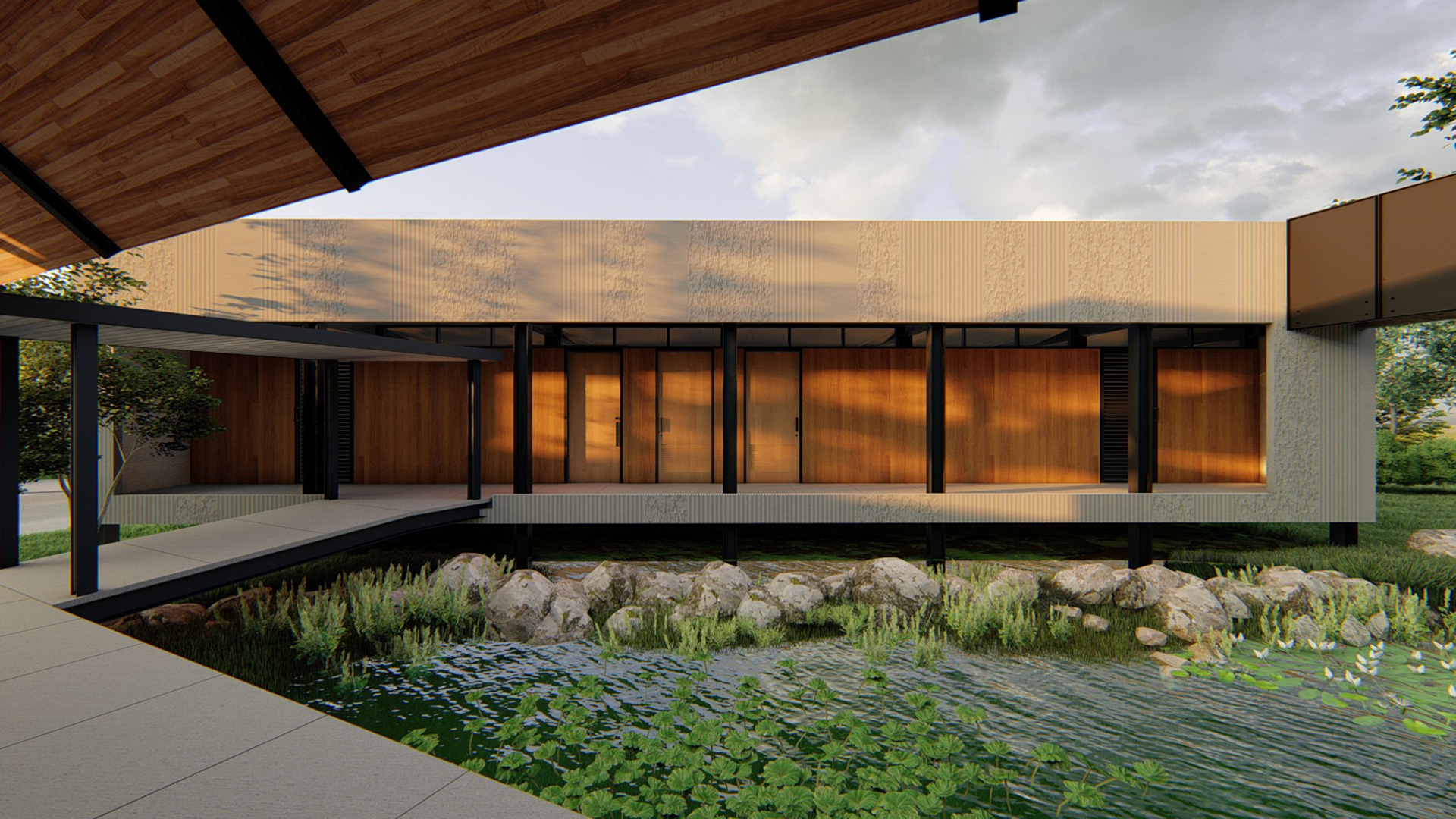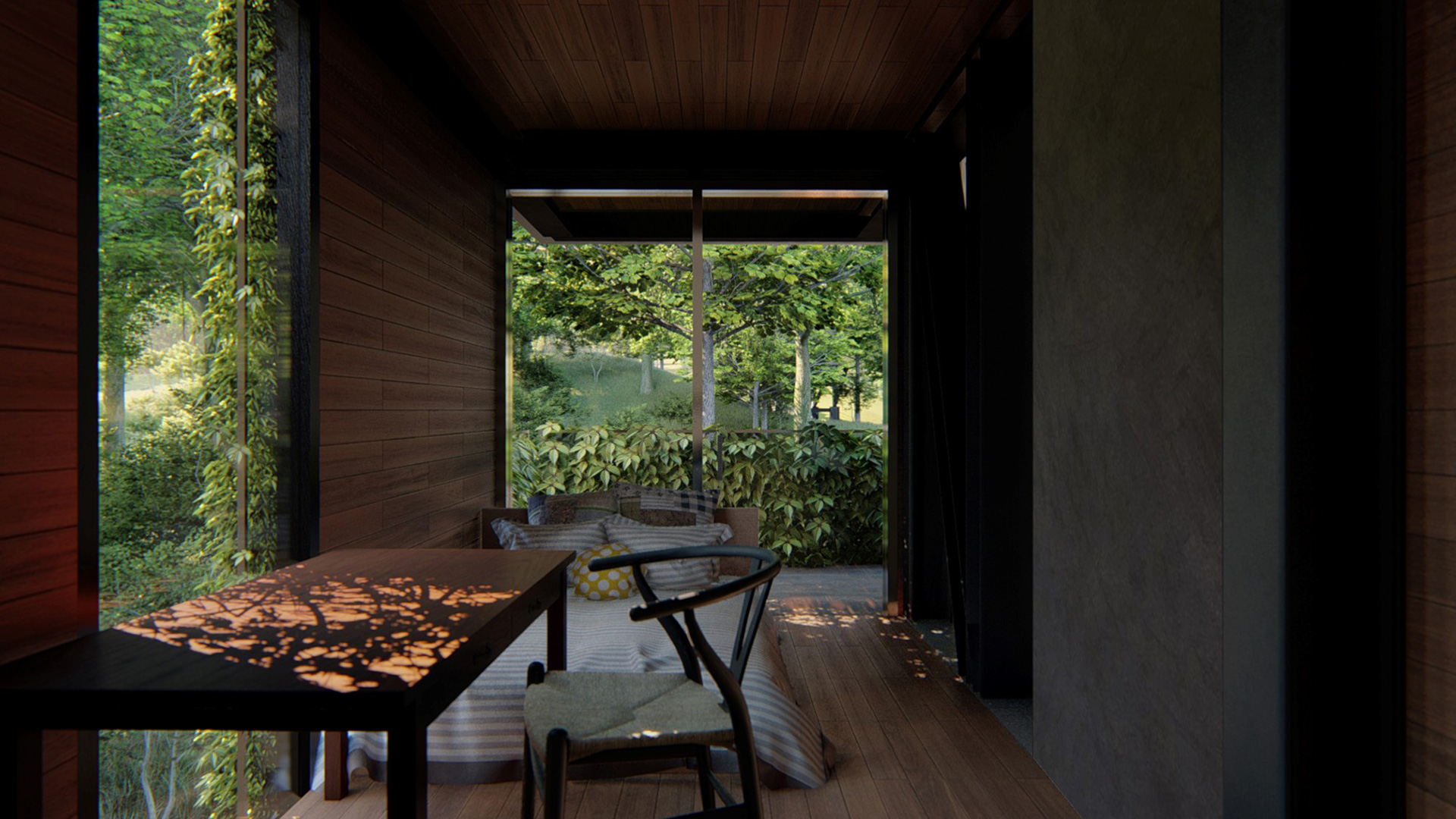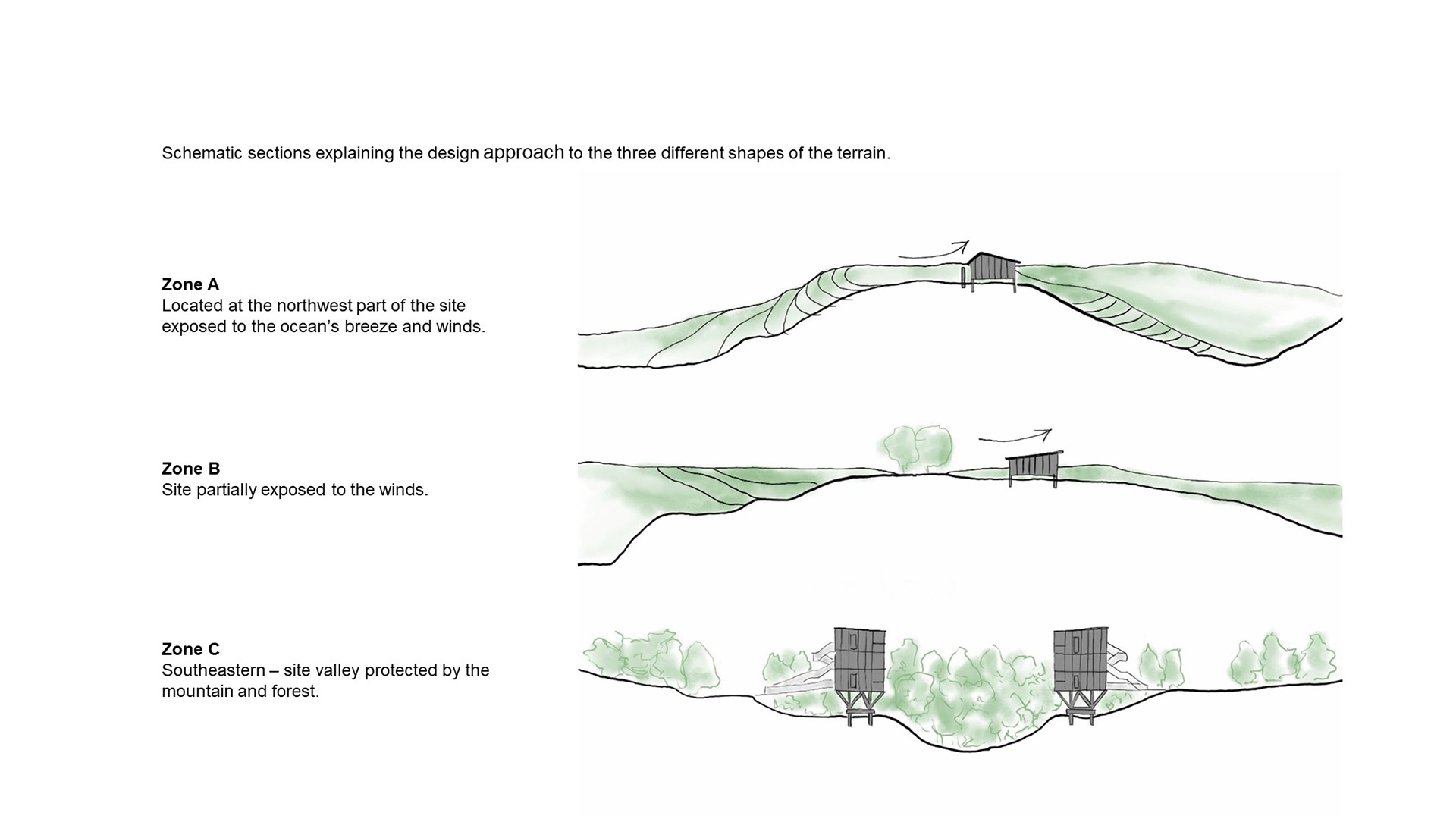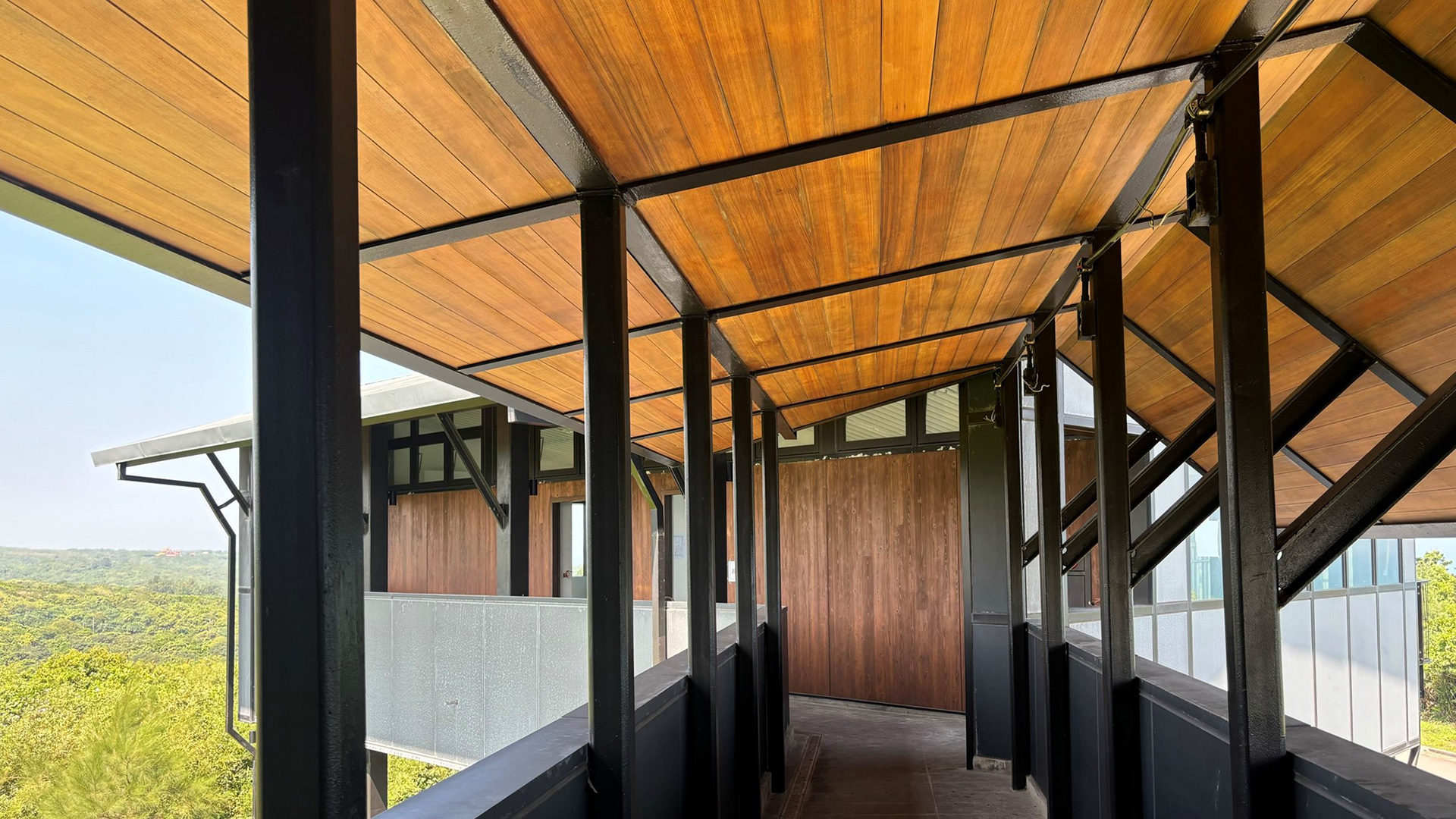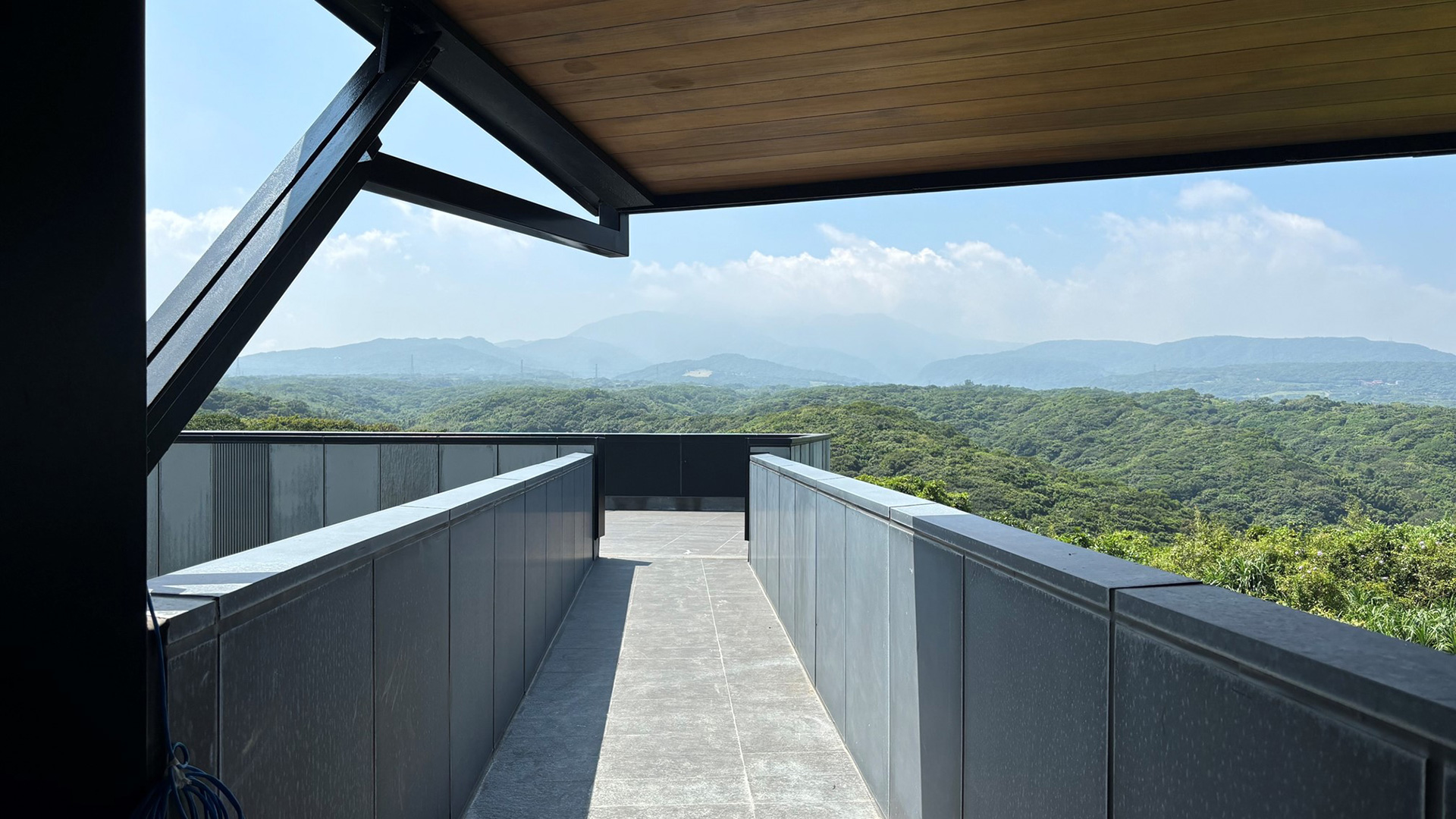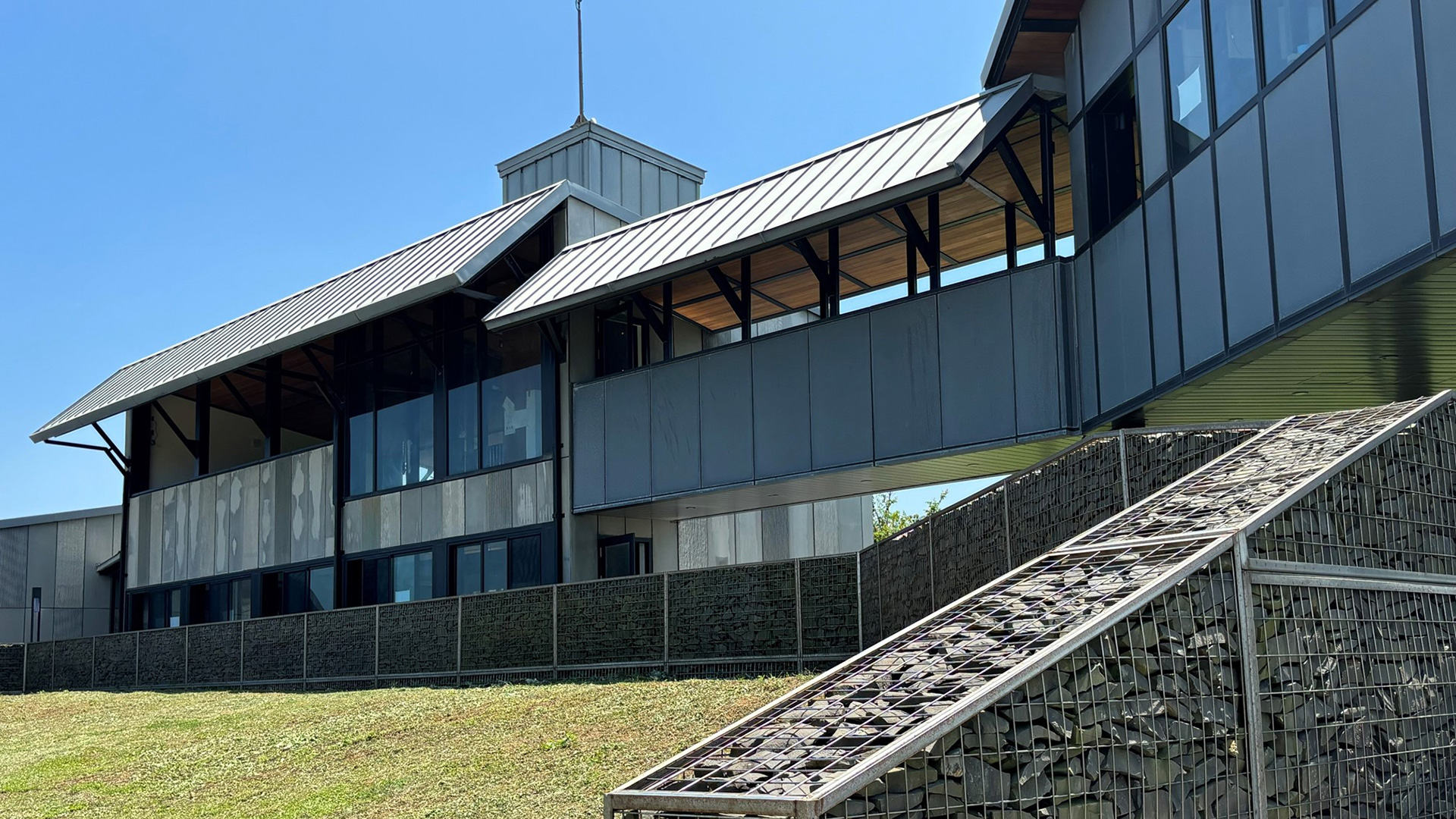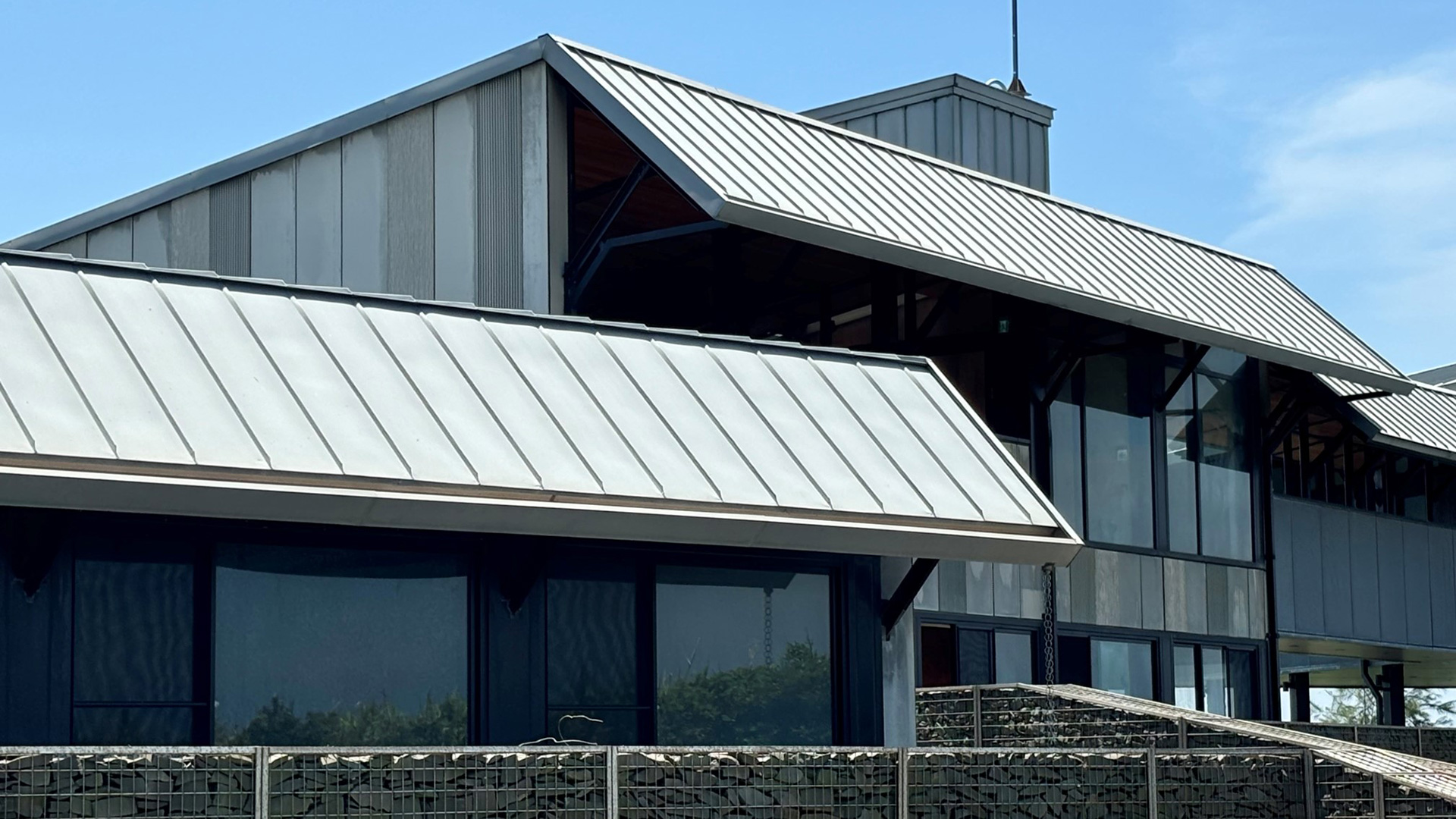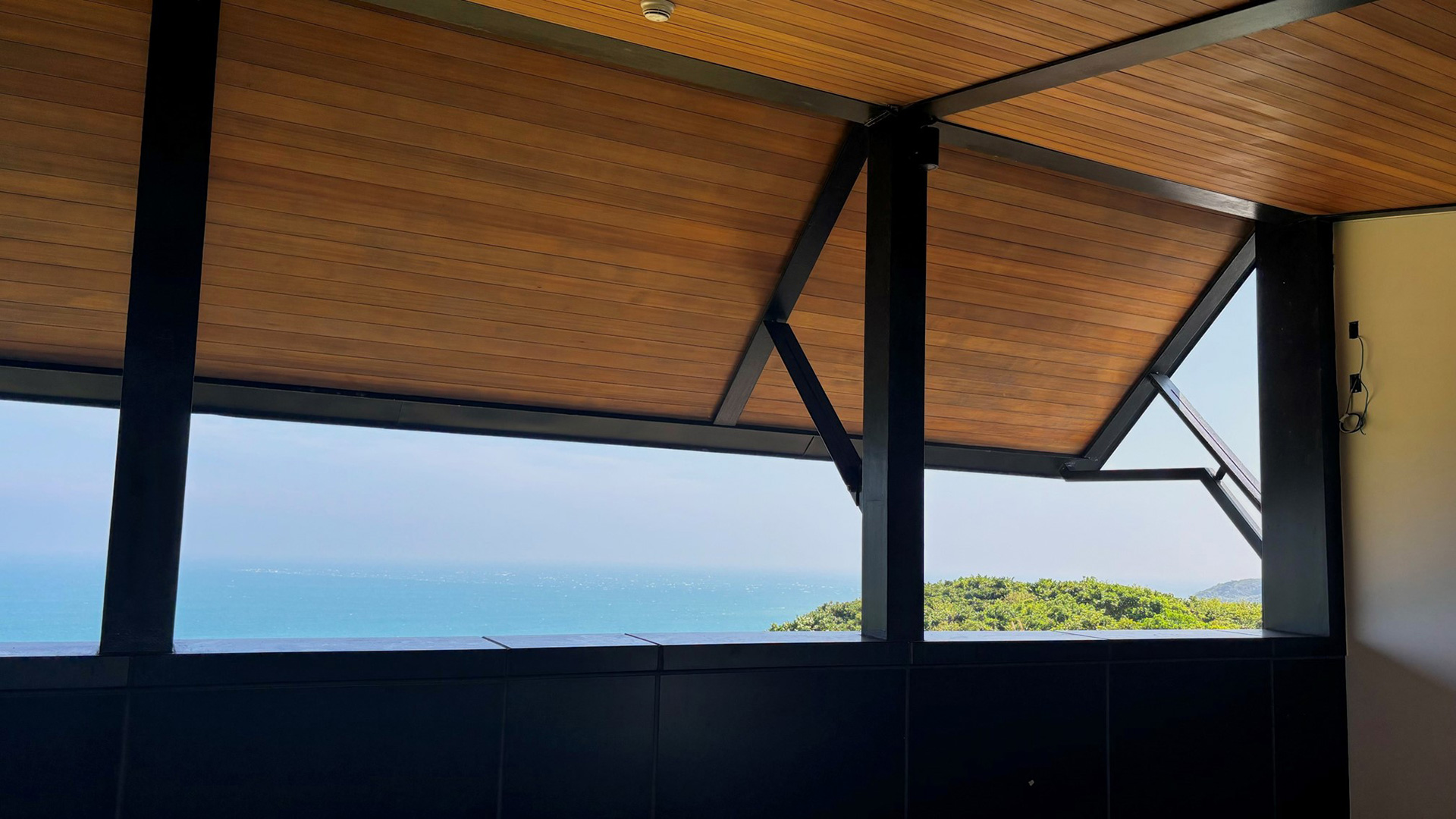Even the most extraordinary humans must remain humble in this paradise for wild flora and fauna. Just like how a newcomer brown shrike would never disapprove of the dense boughs but would instead construct a safe nest to sleep in, the sleeping units are also tucked between trees at the foot of the slope, somewhat insulated from wind in this verdant, quiet and recluse sanctuary. An all steel structure and pre-fabrication are the construction method of choice. To minimize disruption to the little creatures that call this place home, prefab components are quickly assembled onsite and concrete casting is kept minimal.
Entry into the three-story sleeping units is via a wooden staircase that links to the side ramp. This airy three-story structure is actually cantilevered so that its only contact with the low-lying site is merely a few foundation files with a minimized footprint. “Simple” is the tenet for life here: two single rooms on each level with only a bed, bathroom and balcony. No dazzling neon lights, no drunken boisterousness late at night. Life in-between the trees is emerald during the day and pitch-black at night. Devoid of light and noise, perceptions are infinitely heightened; as if cast into unintended meditation in a primitive world, all that remains is a dialogue with oneself.
Perhaps you would only come to realize that another day has come when you’re awakened by sunrise or a holler from a soaring crested serpent eagle in the distant skies. You catch a ride or simply walk by the landscaped rainwater retention pond and experimental farms to arrive at the environmental education center, another pile-supported structure lightly perched above ground. Asymmetric triangular roofs block wind on their short side and an added shading design deals with western sun exposure. Rhythmic circulation linking the interiors, verandas and terraces generate different viewpoints toward the sea and mountains at different angles. People come and go, and so will the architecture one day. That day, when these structures have fulfilled their purpose, they can be readily dismantled and the materials reused in another place. Like a migrant bird that, when the time comes, flaps and spreads its wings to fly to the next destination. The ecology here will remain intact and vibrant, as if interruption and interference by humankind have never transpired.
